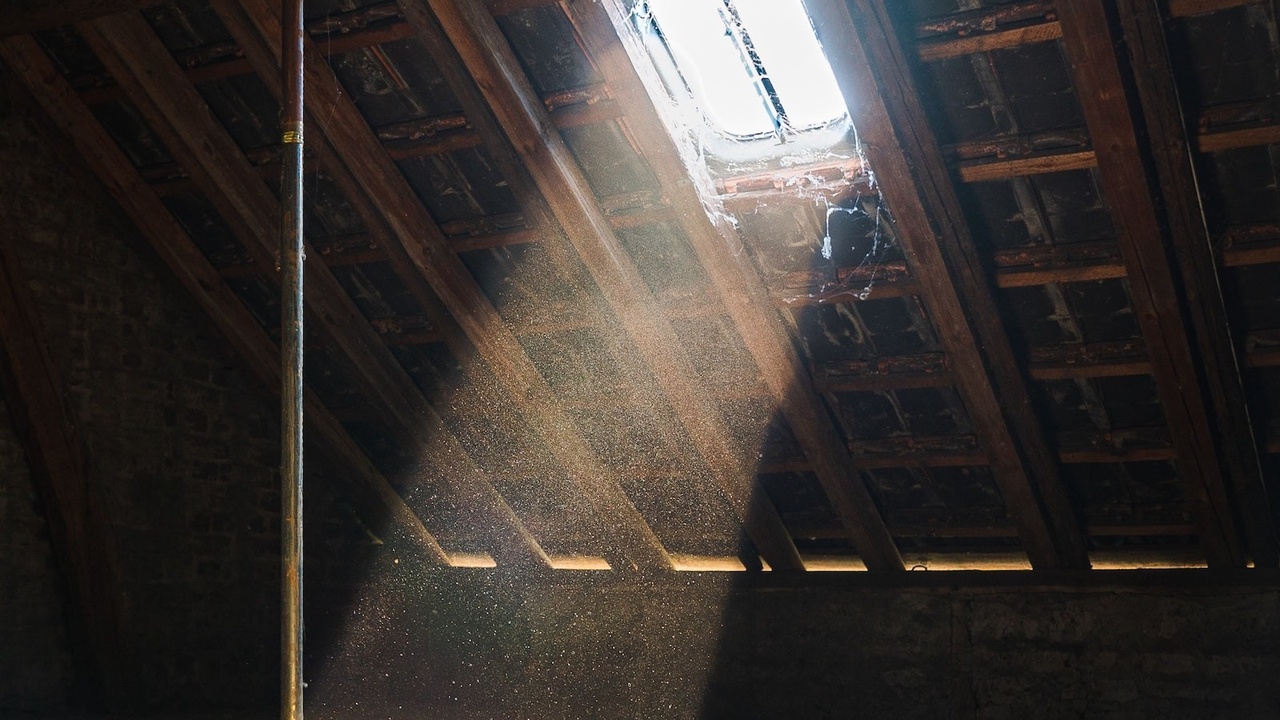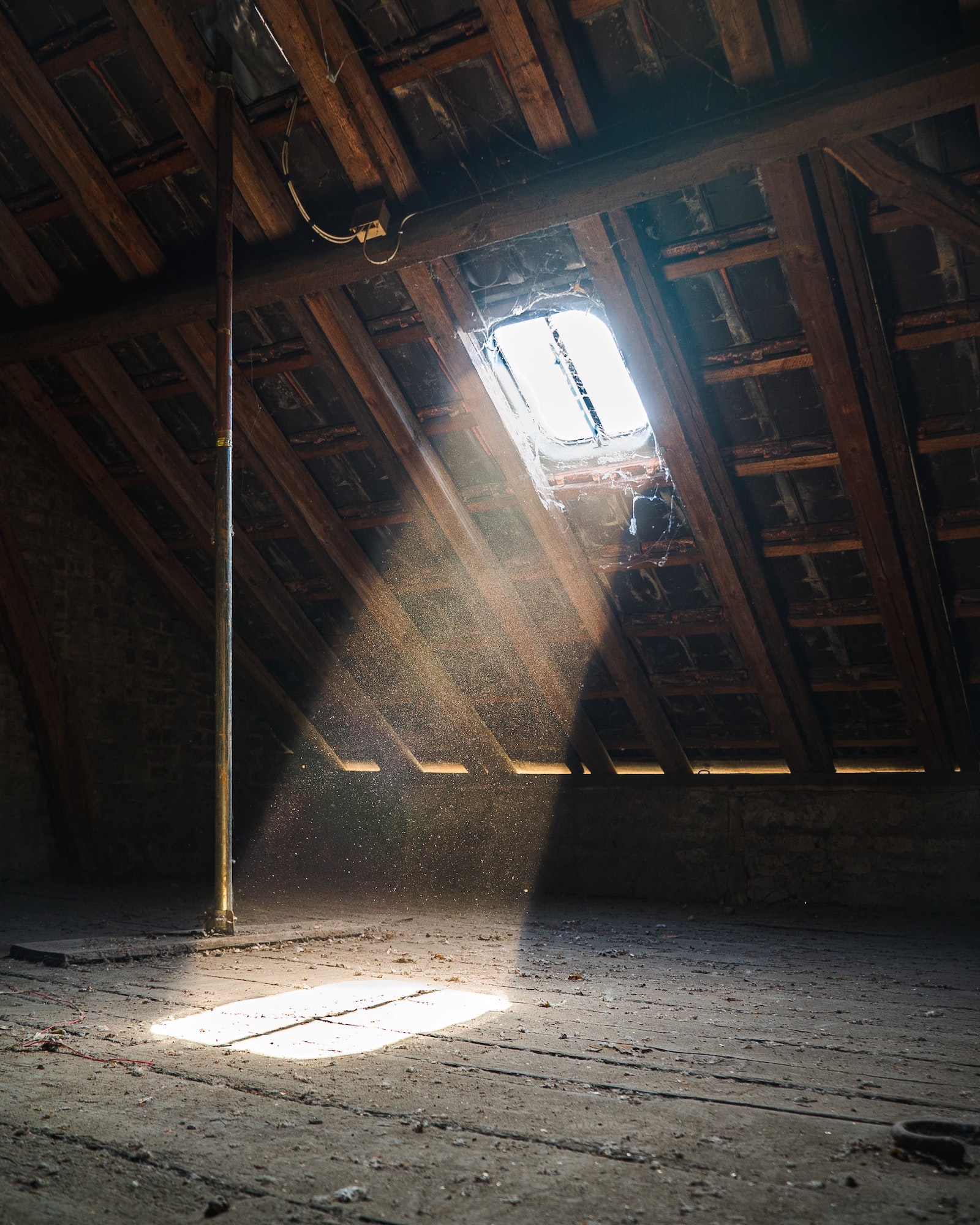Mold in Attic: Causes, Removal, and More
Oct 24, 2022
We brave the attic four times a year. Through various holidays and spring cleaning, we find ourselves surrounded by all sorts of relics from the past. The attic is notorious for being a spooky space; it’s littered with cobwebs and unexpected crawling friends with too many legs.
The air quality in every space of your home impacts your immune system. If you’re particularly sneezy when you’re in the attic, or even if you aren’t, there’s a good chance that mold could be developing.
How to identify attic mold
If there's mold in your attic, you might stumble upon it or it might go undetected for years, leading to unnecessary, and often dangerous health concerns. There are some telltale signs that mold has infiltrated your attic, and knowing how to identify them is key.
Discolored wood or furniture
One of the quickest and most obvious ways to recognize mold is to see if there are colored spots on walls, wood, and furniture. Mold typically stands out from its surroundings, and can often present as gray or black. Gray and black molds are sometimes more harmful than other types of mold, so if you spot these in your attic, it’s imperative that you connect with a specialist.
Humidity and mildew odor
Mold can almost always be found where the humidity is high via a water leak or other moist conditions. While it doesn’t need light in order to grow like most fungi, it does need water and oxygen, and any area of your home where there’s consistent dampness or moisture is at high risk of more development. Smells are another indicator that mold may be present. Unpleasant odors like mildew can give off musty, foul smells – and sometimes mold can even have a faint urine smell to it.
Consistent presence of water or moisture
If you notice any presence of water or a damp corner in your attic, it must be addressed immediately to prevent mold (if it’s not already growing) and to eradicate any more that has developed. A permanent fix for any leaks in your attic is essential to destroy the mold completely. If you put a short-term bandage on it, you’ll only prolong the issue.
Common causes of mold in attics
Mold spores flow through the air waiting to attach themselves to a damp surface, and attic mold is often missed because it’s not a place where anyone spends much of their time. Mold can impact the integrity of your home structure, creating issues with framing and timber. It can disintegrate and decay drywall, creating a whole new type of safety risk.
Blocked or insufficient ventilation
The most common causes of mold and attics is due to insufficient or blocked ventilation. No breathing room, and no soffit vents. Although strict energy-efficient construction laws were implemented in the 90s, they failed to balance out the need for increased ventilation as well. Without the ability to breathe and dry, your attic is susceptible to an endless amount of mold types.
Roof leaks
Roof leaks can be an unfortunate byproduct of poor ventilation and attic insulation. It could also be caused by weathering, weak infrastructure, and natural disasters. Any leaks that you can identify in your roof need to be addressed immediately, especially if mold is not present. That permanent fix is a long-term prevention method, ensuring that your home will stay free of attic mold for years to come.
How to remove mold from an attic
Mold removal is a delicate and sometimes dangerous task. It’s not something you can learn how to do by watching a DIY YouTube video. In fact, professional molder mediation fall is a strict set of guidelines to keep you and the space safe and structurally sound.
Identify the source of moisture
With any problem, the solution normally begins by locating the source. You can take time to seek out what area of your attic feels extra humid, and start looking for an area that is leaky or particularly moist.
Professional mold remediation guidelines
A professional mold remediator works within a set of guidelines to keep things in mind like cross-contamination, respiratory effects, and other serious concerns. There are plenty of easy mistakes to make that come with consequences.
Why you shouldn’t DIY mold removal
If you choose to attempt a “do it yourself” mold removal, you just might end up making matters worse. If your roof was falling apart, you would hire a contractor or roofing specialist to come out and give their expertise, with everybody’s safety in mind. Skip the DIY and save yourself the stress, time, and expenses, and especially your health.
Get mold remediation certified with NIAQI’s mold courses
If you are interested in becoming a mold remediation specialist, we are ready to support you the whole way through. Investing in your education as a home or business owner is essential. Get mold remediation certified with NIAQI’s mold courses and discover a set of skills that can set you up for a lifetime of success.
Get mold industry news and updates from NIAQI.
Join our mailing list to receive the latest news and updates from our expert mold instructors.
Don't worry, your information will not be shared.
We hate SPAM. We will never sell your information, for any reason.


